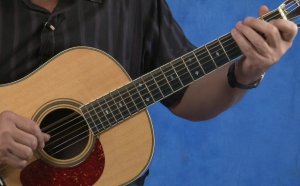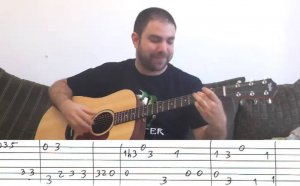
Electric guitar lessons for Beginners videos
Welcome to video six in the Beginner Guitar Quick-Start Series. In this lesson, I’m going to teach you how to tune the guitar. Knowing how to tune your guitar is very important because no matter how great of a guitar player you are, if your guitar is out of tune, it’s not going to sound very good. By the end of this lesson, you’ll know everything you need to tune your guitar.
This will be a longer lesson because I want to make sure that we don’t leave anything out, so we’ll break it up into three main sections. The first section is tuning theory and tips, the second section is tuning the guitar with an electronic tuner, and the last section is tuning your guitar by ear.
If you already know how to use an electronic tuner to tune your guitar, feel free to skip to the part about tuning by ear. If you know how to tune your guitar altogether, you can move right to the next lesson.
Let’s talk about what you need to know to tune your guitar. You’ve already learned the names of the open strings on the guitar, which were E-A-D-G-B-E. The next thing you need to learn is the natural musical alphabet, which is simple but a must-know. The natural musical alphabet is the first seven letters of the alphabet, so A-B-C-D-E-F-G.
You also need to be familiar with the concept of a note being flat or sharp. The symbol onscreen in the video that looks like a lowercase ‘b’ is the flat symbol, and when it’s next to a natural note, it means the note is flat. When we talk about being flat while tuning the guitar, this means the note needs to come up a bit.
The next symbol onscreen that looks like a tic-tac-toe grid is the sharp symbol. When we talk about being sharp while tuning, this means the note is a little too high and it needs to come down. When you use an electronic tuner, there are a couple of ways it will tell you if a note is sharp or flat. One way is using lights, which will be off to the left if your note is flat and needs to come up a little. If the lights are off to the right, your note is sharp and needs to come down. Instead of lights, an electronic tuner might use a needle, which works the same way the lights do.
Learning how to tune your guitar can be tricky at first, and just like any other guitar skills, it will take practice. I’ll give you some tips that will help you from breaking strings, which can be very frustrating as you learn how to tune.
The first tip I want to give you is to make sure you’re turning the right tuning key. For example, if you want to tune your D string, follow the D string along the fretboard to the headstock where you can see the correct tuning key to use. Otherwise, you might accidentally turn the A string tuning key, wonder why your D string isn’t changing, and end up breaking your D string. Always double-check that you are turning the right tuning key for the string you’re tuning.
The second tip to help you from breaking strings is that if you think you’re tuning the string too high or too far, you probably are. I suggest you stop, crank the string back down, and start again. One thing to practice before you get started is to go to any string and play with the tuning key, find out how much turning makes the note go up or down, and get familiar with the string.
Today, there are lots different tuners you can choose from. There are clip on tuners, pedal tuners, and handheld tuners. It doesn’t matter what kind you use, and you can get a good tuner for $15-20. Today in the video, I’ll be using a tuning app on my iPad, which also works really well.
One thing I want to show you on my tuning app before we get started is that if you have a calibration setting on your tuner, make sure it is set to A 440 Hz. This is the standard tuning frequency, and if you’re not tuned to this, you’ll sound a little off from everyone else.
Now let’s get in to tuning your guitar with an electronic tuner, and I’ll break it into a two-step process for you. The first step is to get each string to the proper note name, so if you were tuning your low E string, get the note to an E first. After that, you’ll fine-tune the E note so that it is spot on.
Starting with the low E note, which I threw out of tune earlier, you can see in the video that it is a D sharp right now, which is lower than it should be. As I use the tuning key to change the note, you can see that I get it up to an E, and matching the note name is the first step. As I play the string again, you can see the E is still a bit low because the tuning needle is to the left. Now I fine-tune the note by slowly turning the tuning key until the tuning needle is in the middle.
YOU MIGHT ALSO LIKE


Share this Post
Related posts
Acoustic Blues Guitar Lessons for Beginners
Every guitar player experiences a major turning point early on in their education. After the requisite, and often times…
Read MoreYouTube Guitar lessons for Beginners acoustic
How to Get the Most from Your YouTube Learning Experience Want to improve your playing, but don’t have money or time to dedicate…
Read More










